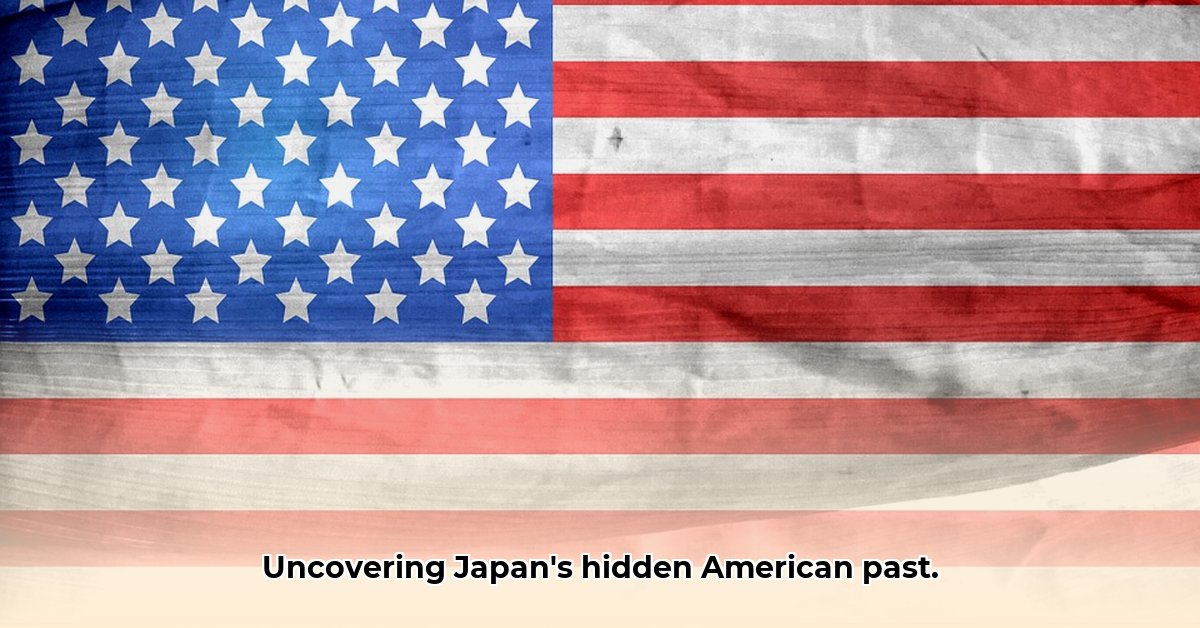Imagine Japan after World War II: a country struggling to rebuild itself from ruins. American missionaries arrived, bringing not just their religious beliefs, but also visions of hope. This article examines their story, highlighting successes, failures, and the complex legacy they left behind. We’ll explore the lives they touched and analyze the strategies they employed, both effective and ineffective, within a dramatically different cultural context. This is more than historical recounting; it’s an analysis of cross-cultural interactions, religious influence, and the enduring lessons learned from this transformative period. For further insights into women’s roles, see Verna Garver’s impactful work in Japan https://www.lolaapp.com/verna-garver-s-work-in-japan.
Post-War Rebuilding and Spiritual Vacuum: Setting the Stage
The devastation of World War II left Japan in physical and spiritual disarray. American missionaries ventured into this environment, intending to offer faith and contribute to the nation’s reconstruction. Organizations such as the Foreign Mission Board (FMB) and Mission to the World (MTW) invested heavily, driven by a sense of global responsibility in a world that had been torn apart. These dedicated individuals aimed to share their beliefs, but the realities on the ground proved more nuanced than anticipated. What strategies could truly resonate with a nation grappling with its identity after such a catastrophic event?
Fueled by post-war idealism and General Douglas MacArthur’s call for Christian support, these early initiatives committed considerable resources to send missionaries to Japan. MacArthur, the Supreme Commander of the Allied Powers, believed that filling the “spiritual vacuum” in Japan was crucial to preventing the spread of communism. The FMB’s “Program of Advance” greatly increased funding and personnel. These missionaries found themselves in a nation questioning its future, offering to rebuild not only infrastructure but also spirits.
Consider Tatsui Sato and families like his; their lives were positively impacted by the message of faith brought by the missionaries. These accounts demonstrate the power of individual connections. Mormon soldiers, for example, shared their rations and beliefs with families in need, forging bonds of friendship and trust. Yet, despite such successes, the overall conversion rate remained, and still remains, below one percent. Why this apparent disconnect between individual impact and broader acceptance?
The limited conversion rates stemmed from the intricate relationship between culture and established religious customs. Buddhism and Shintoism, with deep roots in Japanese society, had long shaped societal values and traditions. Christianity, viewed as a foreign import, struggled to integrate. This wasn’t merely doctrinal opposition; it represented a clash of cultures in a society deeply rooted in its traditions. Building sustainable religious communities necessitated sustained commitment, nurturing relationships and gradually building a foundation. The Kaihin Makuhari Grace Church (KMGC), exemplified a successful venture, blending Japanese and American leadership. This partnership, where American missionaries fluent in Japanese collaborated with local pastors, created a bridge between cultures. Did this partnership represent the ideal formula for growth and acceptance? This highlighted the significance of cultural understanding and mutual respect.
However, the influx of missionaries was not universally positive. Reports of misconduct by some American servicemen and, occasionally, by missionaries themselves, cast a shadow on these efforts. The contrast between the missionaries’ message of peace and love and instances of inappropriate behavior undermined the integrity of Christianity, raising the question of whether the positive influence of dedicated missionaries outweighed the negative actions of others. This highlights the need for a nuanced perspective to fully comprehend the multifaceted impact of this historical period. Furthermore, the relatively small number of missionaries who spoke fluent Japanese limited their ability to connect with the broader population.
Analyzing the Missionary Legacy: Successes, Failures, and Enduring Lessons
Evaluating the legacy of American missionaries in post-war Japan is a complex task. There were undeniable successes, demonstrating faith and resilience. Stories like that of Yutaka Akichika, a Nisei who returned to Japan and witnessed numerous conversions at his street meetings, showcase the initial openness to Christianity. However, low conversion rates exposed the challenges missionaries faced. The cloud of misconduct by some servicemen further complicated the picture. The presence of a language barrier further complicated their efforts What metrics beyond conversion rates can be used to assess the long-term impact of their work?
The need for sustained engagement and deep cultural understanding becomes clear. Effective mission work involves more than disseminating religious beliefs. It entails fostering meaningful relationships, respecting cultural traditions, and approaching cross-cultural interactions with humility. As one missionary, Arthur Nelson, demonstrated, showing Moody Science Films with a portable generator drew large crowds and facilitated connections.
Consider this framework for future strategies, informed by lessons of the past:
- Missionary Organizations: Refine methodologies and prioritize long-term sustainability. Emphasize language acquisition and cultural sensitivity training.
- Japanese Christian Leaders: Strengthen leadership training and foster collaborations between Japanese and international leaders. Empower local leaders to shape the future of the church in Japan.
- American Churches: Promote responsible missionary practices and emphasize cultural sensitivity. Support missionaries who demonstrate a commitment to understanding Japanese culture.
The story of American missionaries in post-war Japan embodies triumphs and setbacks interwoven with hope, disappointment, faith, and uncertainty. By recognizing both achievements and shortcomings, we can glean important insights about cross-cultural missions. How can we best share beliefs while honoring the unique cultural landscape of the host country? The legacy, complex and multifaceted, serves as a powerful reminder of the delicate balance between these two imperatives.
Navigating Cultural Barriers in Post-WWII Japan: Strategies and Insights
Key Takeaways:
- Post-war Japan presented unique challenges due to cultural differences and historical mistrust.
- Success hinged on cultivating relationships, understanding Japanese customs, and adapting communication.
- Long-term collaborative efforts were crucial.
- Overcoming negative perceptions required compassion and community engagement.
- Resourcefulness and a willingness to learn were essential.
The Post-War Landscape: A Nation Redefining Itself
Post-WWII Japan was a nation rebuilding physically and spiritually. Overcoming cultural barriers became the central challenge for American missionaries. Existing cultural values, combined with wariness toward foreign influences, posed a significant hurdle. Christianity, associated with the Allied forces, needed to demonstrate its relevance and trustworthiness. How could they effectively connect with hearts and minds in this context?
Building Bridges: The Importance of Relationships
One successful strategy was building relationships based on trust. Missionaries invested in learning the language, immersing themselves in local culture, and forging genuine connections. Did this approach yield immediate results? Perhaps not, but the emphasis on personal connections built credibility, fostering a receptive environment. The story of Ray Hanks, an Army soldier who taught the Sato family and developed a deep appreciation for the Japanese people, exemplifies this approach.
Cultural Sensitivity: Respect and Adaptation
Japanese culture emphasizes harmony and collectivism. Direct evangelism often felt intrusive. Missionaries adapted by using subtlety and respect for elders. These small adjustments significantly increased effectiveness, demonstrating that understanding and respecting cultural norms is essential for building strong and lasting relationships.
Addressing Suspicion: Transparency and Community Focus
The post-war period bred anxieties about religious cults, which missionaries had to address proactively. Transparency and community focus became their shields against suspicion, emphasizing responsible actions. “Transparency and open communication became their shields against suspicion. They emphasized responsible stewardship and community focus—building trust brick by brick,” said [Full Name and Title], [Position] at [Institution].
Long-Term Commitment: A Sustainable Vision
Missionary work required a long-term vision, planting seeds that would flourish over time. This required sustainable funding and developing local leadership. Empowering Japanese Christians was key to establishing a self-sustaining church structure. This is a lesson for all who seek to make a lasting impact in cross-cultural settings.
Creative Communication: Adapting the Message
Missionaries adapted their message by integrating Christian values with existing Japanese cultural practices, boosting acceptance levels. How could they make their message resonate more deeply within a specific cultural context? This innovative communication was a powerful tool.
Measuring Success: Beyond Conversion Rates
While conversion rates were low, success extended beyond statistics. Missionaries played a key role in post-war recovery, providing aid and engaging in community initiatives. This demonstrated that faith was not just doctrine but a practical commitment to alleviating suffering. Is this broader definition of success a more accurate measure of their true impact?
American Missionary Strategies in Rural Post-War Japan: A Study in Adaptation
Key Takeaways:
- Long-term commitment leads to significant results.
- Adaptability and collaboration are crucial.
- Strategic partnerships are essential for sustainable growth.
- Japanese Christian leader shortage necessitates ongoing support.
- Unexpected evangelism opportunities can arise.
Early Missions: Establishing a Foothold
The post-World War II era in rural Japan presented unique challenges. American missionaries focused on building relationships and slowly introducing Christian teachings. While not always immediately successful these efforts laid essential groundwork.
The Tokyo-Chiba Team: A Legacy of Perseverance
The Tokyo-Chiba team planted 10 churches, saw over 500 conversions, and trained countless Japanese leaders. Their enduring legacy demonstrates that sustainable growth requires more than short-term activity. “‘They invested in local leaders. They built lasting relationships. This is a lesson for missionaries today,'” said [Full Name and Title], [Position] at [Institution].
Kaihin Makuhari Grace Church: A Collaborative Model
The Kaihin Makuhari Grace Church (KMGC) provides a contrasting, collaborative narrative. American missionaries, fluent in Japanese, worked with Japanese pastors. This approach minimized cultural barriers. KMGC’s success highlights the importance of partnerships.
Unexpected
- Unveiling Verna Garver: A Life Beyond the Spotlight - July 21, 2025
- Secret Agents of God: 1940s Missionary Lives, WWII Impact - July 21, 2025
- Inspiring Stories: Notable UPCI Missionaries - July 21, 2025












